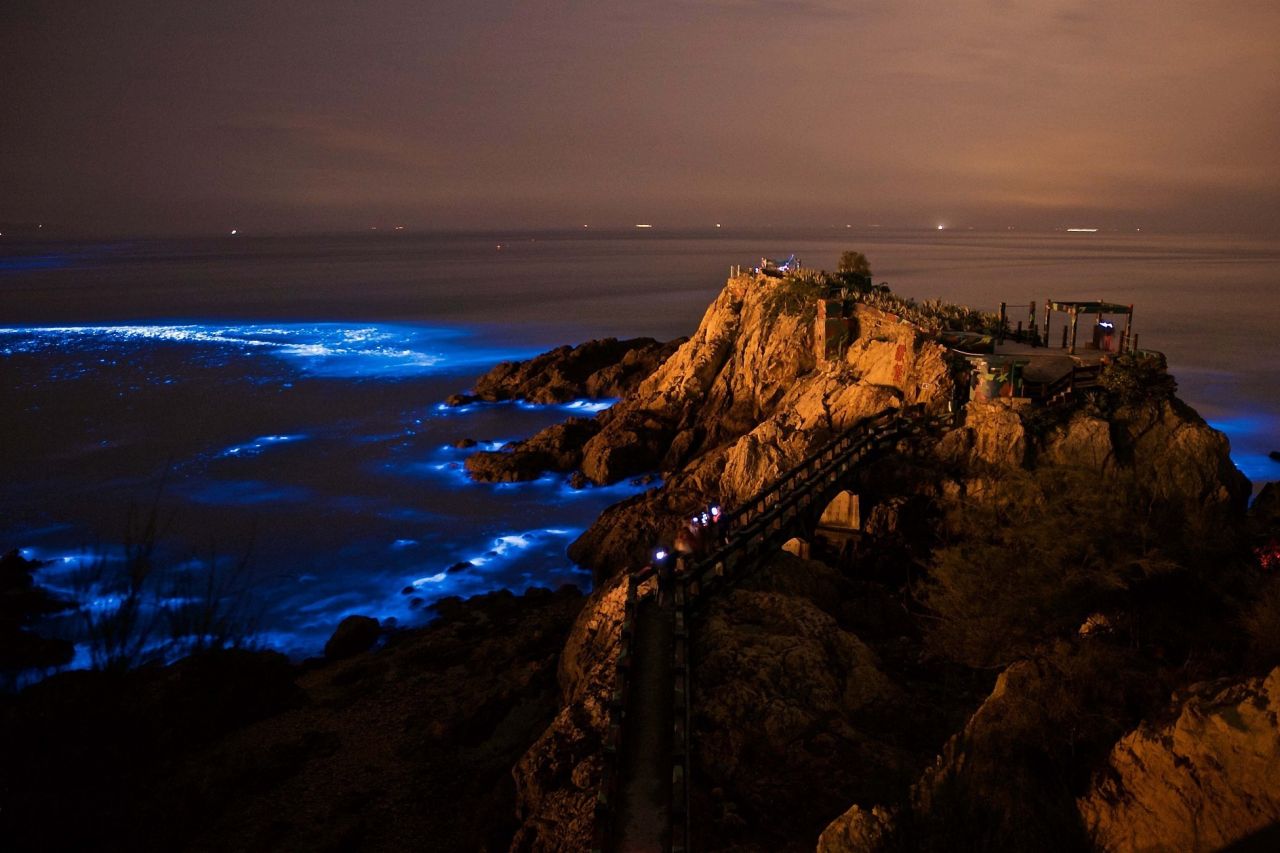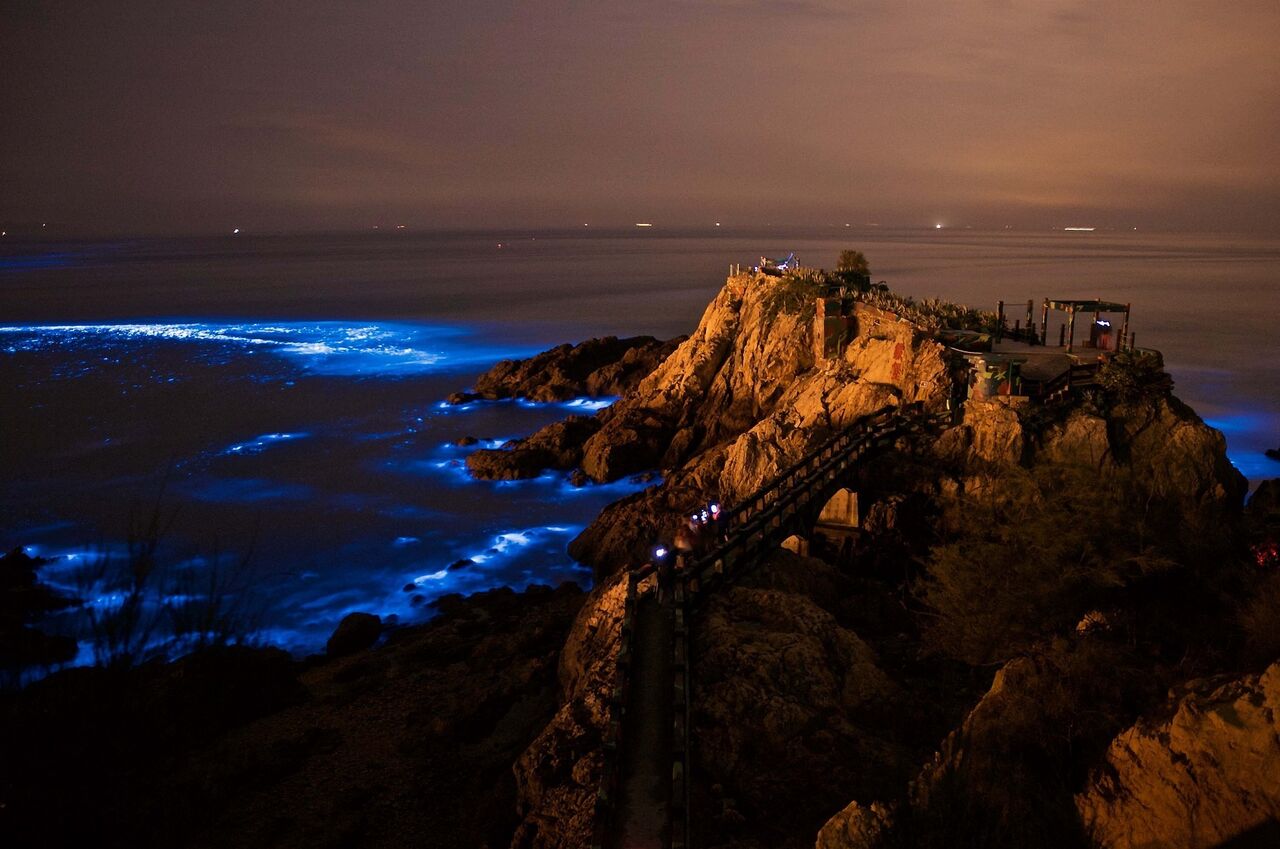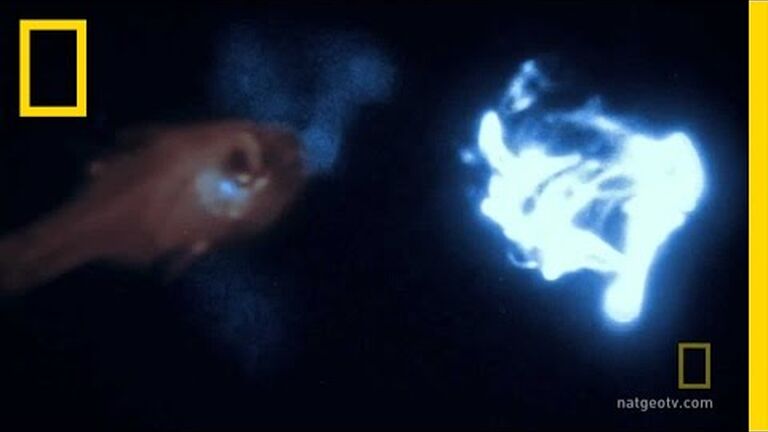We have a deep fascination with animals that light up. Fireflies are perhaps the best-known species, and glow worms. These animals glow because they have bioluminescence abilities. Bioluminescence is the production and emission of light by a living organism. This light is produced by a chemical reaction within the organism. In the ocean there are hundreds of known marine species that are bioluminescent, and certainly just as many unknown ones too. Some fish use their glowing lures to attract prey, some squid have replaced the traditional black ink with bioluminescent liquid, and even worms and bacteria can glow in the dark. Often, these animals have the required chemicals necessary for the reaction that produces bioluminescence. Other animals absorb or ingest bacteria and other living organisms that can glow, and use their ability to its own advantage.
It is generally believed that animals glow because they either want to attract prey or mates, or they are trying to ward off potential predators. But things are not always as clear-cut as we would like them to be. In the marine environment it isn’t always that easy understanding why animals have the ability to light up. Animals with photophores (light emitting organs) tend to live in areas of the ocean that are very dark, and more often than not, that means very deep. This makes studying these animals rather difficult. If one looks at how the light wavelengths are absorbed in water, it is easy to see why it is so very dark, the deeper you go. The long wavelengths of visible light - red, yellow and orange - are the first to be absorbed, at 15, 30 and 50 metres below the surface. In the twilight zone (200 – 1000m), blue light is the only wavelength of light that is still present. Fish and other animals that live at depths greater than 50 metres have mostly lost the ability to perceive the long wavelengths as they are only exposed to the blue wavelengths of visible light. Many animals that live in the deep ocean tend to be red in colour, as this essentially provides them with an invisibility cloak. To overcome the dark, some animals have chosen to light up. Let’s look at a couple of these.
Fire-breathing dragon - Deep sea dragonfish
We’ve met dragonfish before. These weirdly fascinating fish have so many tricks up their tiny sleeves, that it seems the more we learn about them, the more there is to learn. We know they are quite small (max 15cm in length) with a formidable name, have large, gaping mouths and well, even larger teeth. Some dragonfish species also have two photophores below their eyes. The one photophore emits red light and the other blue light. Some species of dragonfish can shoot red light out in front of them, like a laser beam. Because of the depths at which these fish live, the red light is not visible to other fish. However, dragonfish can sense red light, even in the darkest depths of the ocean. Dragonfish also have bioluminescent lures that they use to entice unsuspecting prey closer to their big mouths. And then, just when you think that they have more than enough light, they spring their incredible full-body-Christmas-tree light effect on you. Yes, some of these fish can also light up their entire bodies. Why they do this, no one really knows. Some speculate that this is a way of warding off predators, but there is much still to still learn about dragonfish before this riddle can be answered.
Fun fact: Dragonfish teeth are transparent – which makes the teeth invisible to other fish.
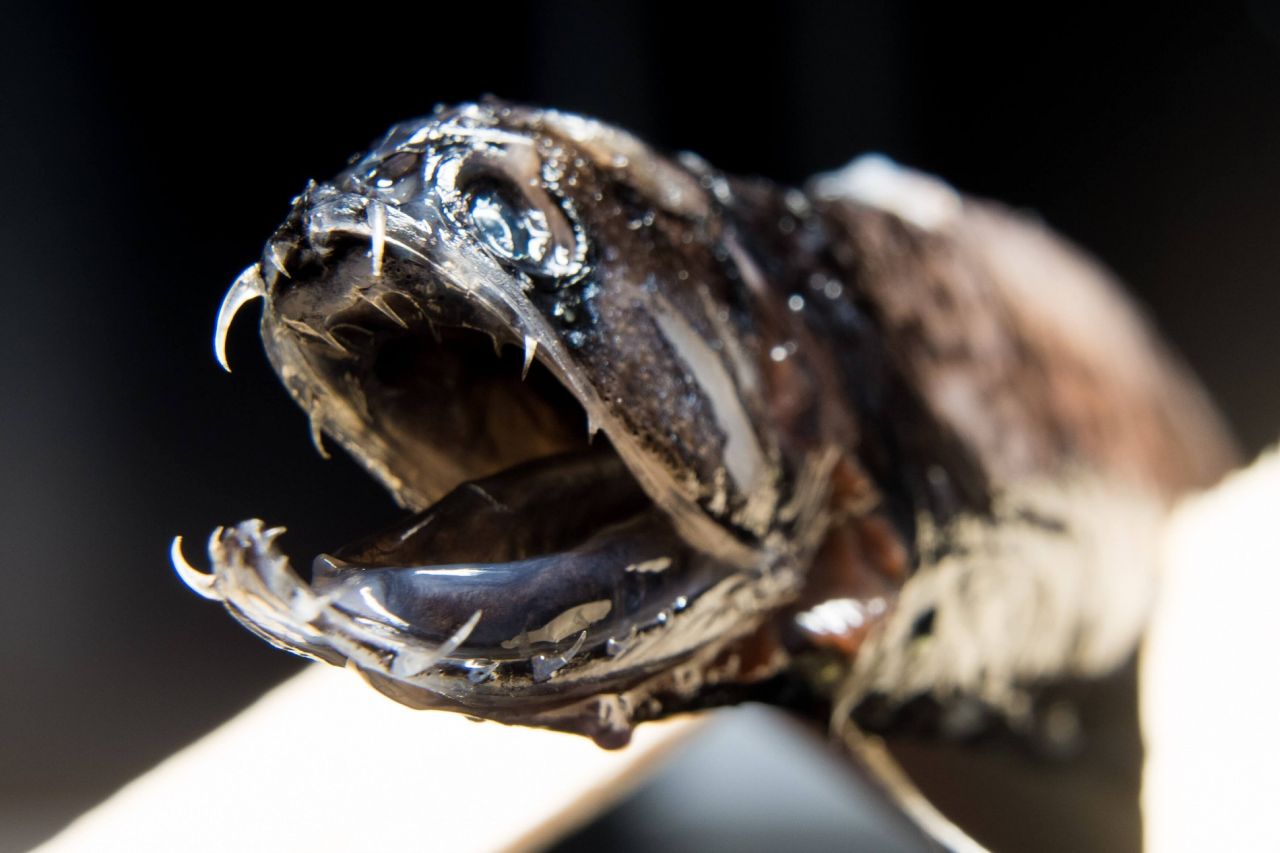
Ocean glow worm - Tomopteris
Tomopteris are segmented bristle worms that swim along the water column, consuming zooplankton. They range in size from one or two centimetres, up to 30 centimetres long. Most tomopteris species emit blue bioluminescence, but one species emits yellow bioluminescence, sometimes spewing yellow bioluminescent mucus. It is extremely rare for any animal to emit yellow bioluminescence, and why this particular species of tomopteris does it, remains a mystery.
Fun fact: Tomopteris means “cut wing”, because they look almost like they have a special fin/wing for swimming.
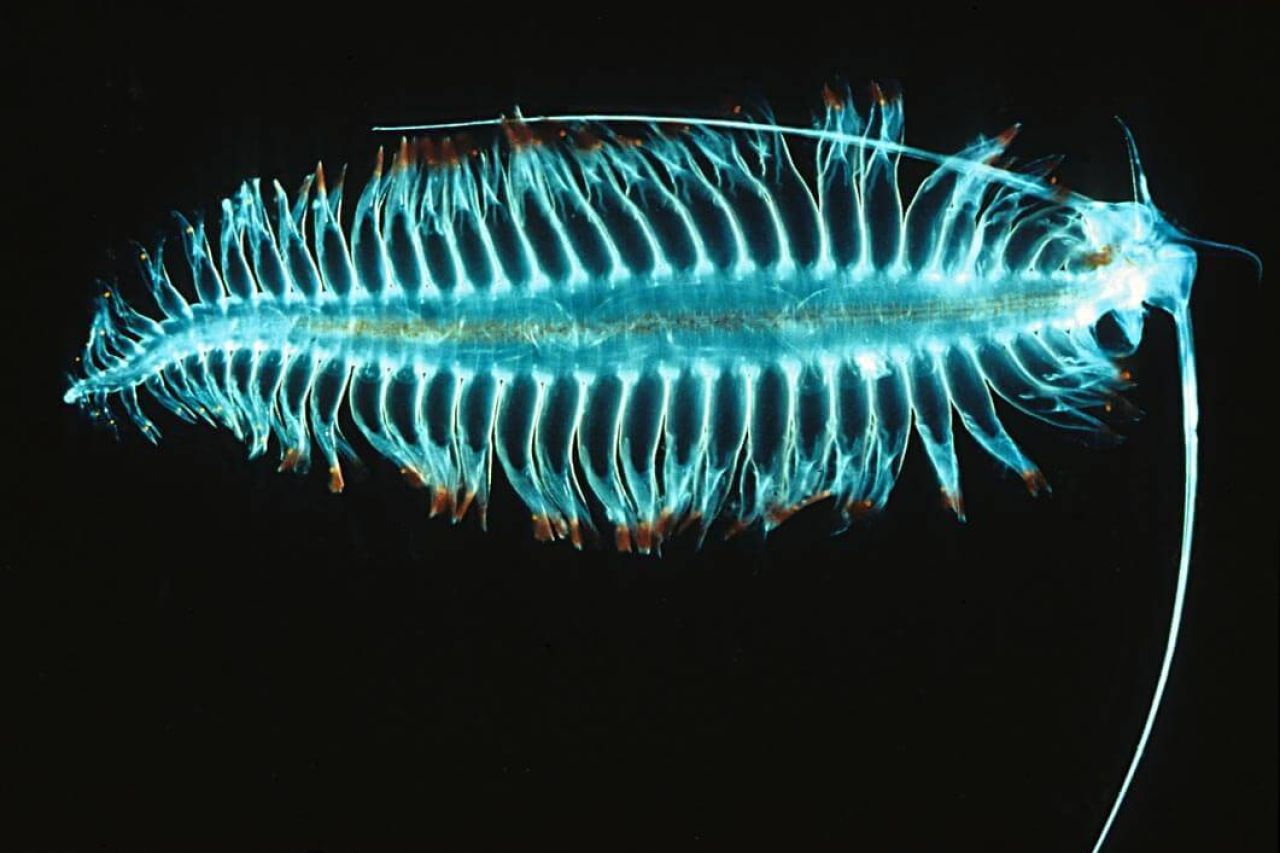
Sucker for light - Glowing sucker octopus
We are including this one, just so that you know that there is something called a glowing sucker octopus, out there. The glowing sucker octopus (Stauroteuthis syrtensis) is one of a small number of octopuses that has bioluminescence abilities. Very little is known about this species and again, they live in extreme depths of between 500 and 4000m. So, studying these tiny animals (up to 10cm in length) is very difficult. They emit a blue-green light from approximately 40 modified suckers under each arm. They can also regulate this light, with some of the suckers continuously emitting a dim light while others are switched on and off. The reason why these octopuses emit light has not yet been discovered.
Fun fact: The glowing sucker octopus holds the Guinness World Record for “Most bioluminescent octopus”.
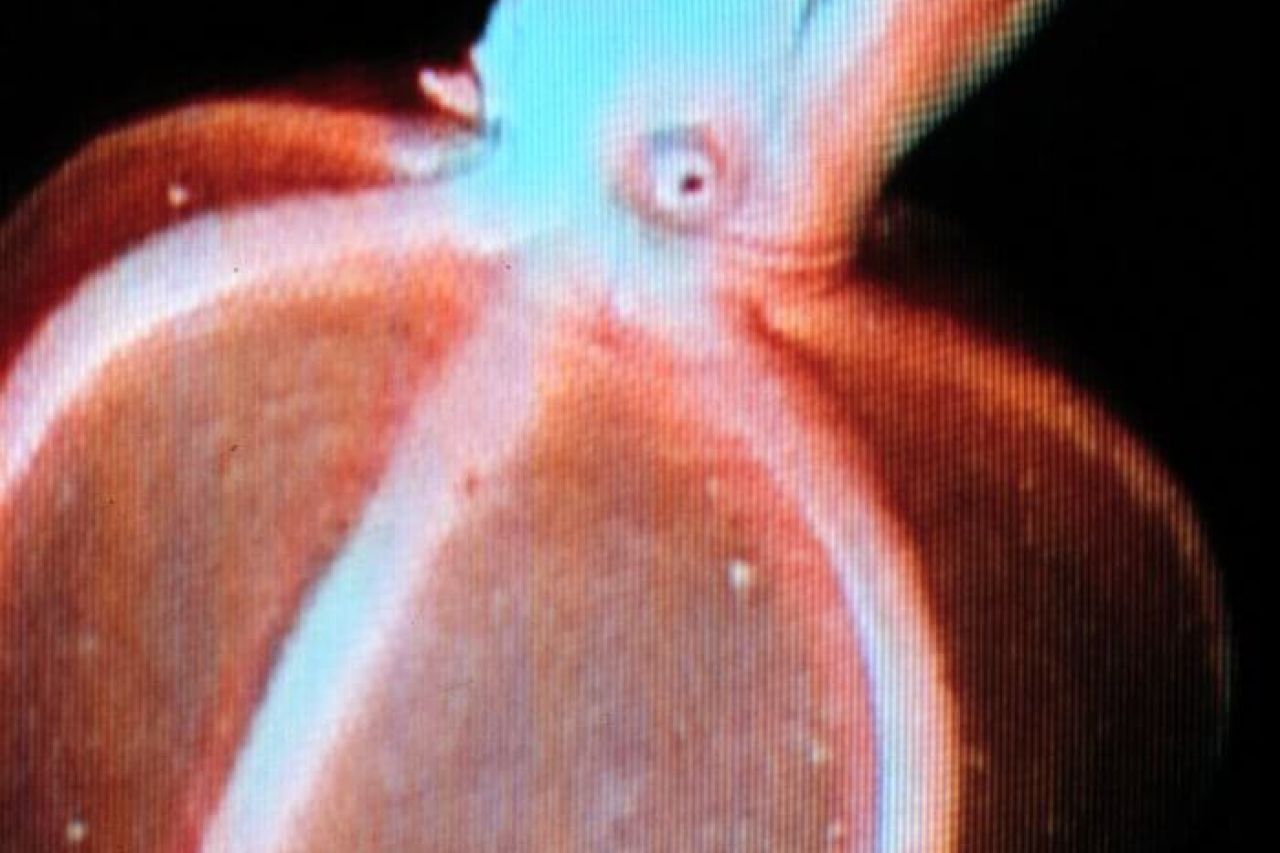
Glow-shark - American pocket shark
These tiny sharks (Mollisquama mississippiensis) live in the Gulf of Mexico. Measuring in at only 14cm, this species took researchers by surprise when it was discovered in 2010. This was only the second specimen found, with the first being discovered in 1979 in the east Pacific Ocean. The best part of these sharks? They have pockets! Well, technically they have pocket glands near their front fins. These glands secrete a glowing fluid that is thought to attract prey.
Fun fact: The pocket shark that was discovered in the Gulf of Mexico also has light-emitting organs on its belly and back.
Not your average cookie-cutter - Cookiecutter shark
Finally, we get to talk about cookiecutter sharks (Isistius brasiliensis)! These cylindrical, blunt-nosed sharks are truly remarkable. Taking their name from their habit of latching on to larger prey and then removing round pieces of flesh, these sharks have been known to attach themselves to whales, giant squid, and the occasional submarine. Their teeth have been described as “bandsaw-like” and razor sharp. Cookiecutter sharks glow green all along their undersides. When these fish make their evening migration to the upper levels of the ocean, this bioluminescence helps them to blend in with the light that shines down from the night sky. By blending in, the sharks can wait patiently for a larger animal to come past, before they attach to the prey and bite off a chunk of flesh. Cookiecutter sharks’ photophores are so small that they cannot be seen by the naked eye.
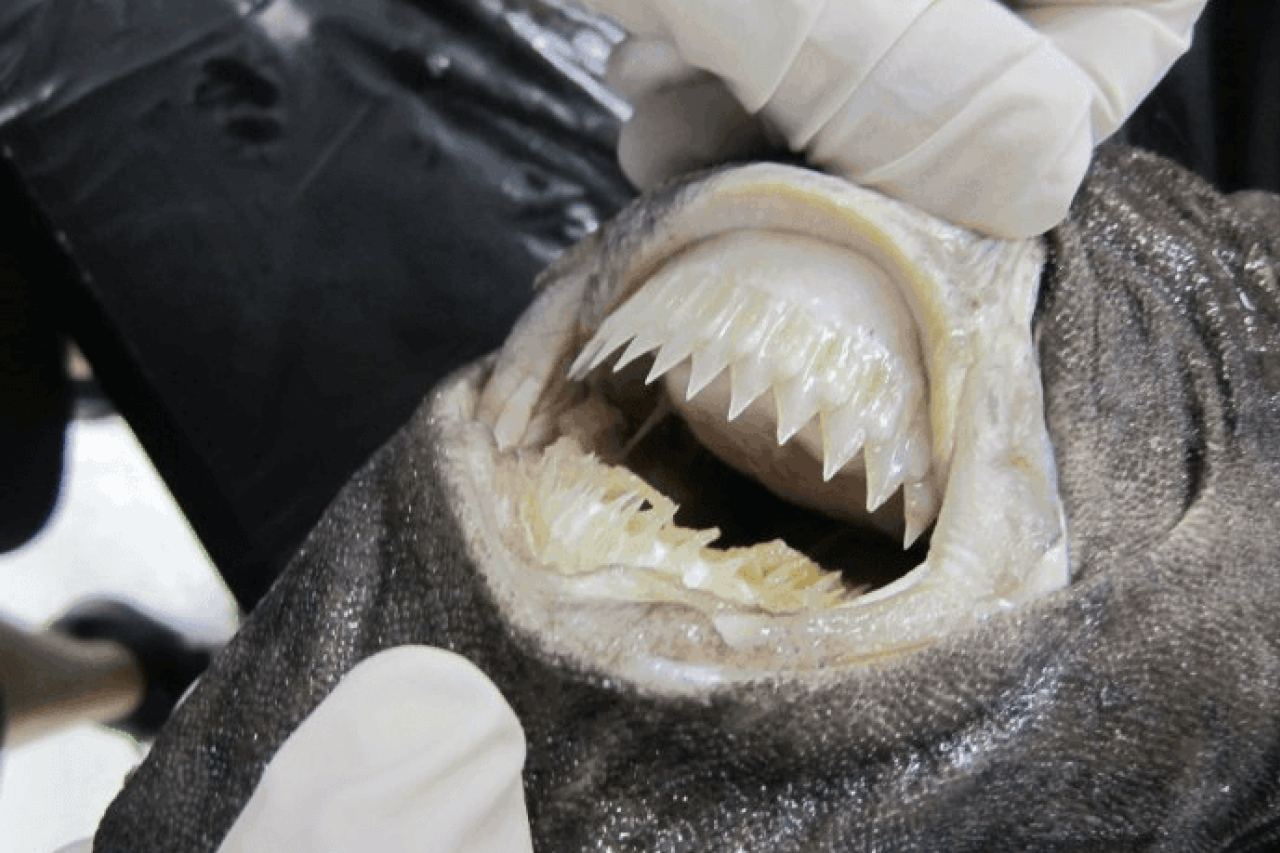
Fun fact: The cookiecutter shark’s green luminescence is reportedly the strongest of any shark and can persist for up to three hours after it has been removed from the water.
To see the wonders of the Two Oceans Aquarium’s glowing underwater world, have a look at this blog. In 2017 Moving Sushi and the Fluorescent Shark project visited the Aquarium to see which animals glow, without us even knowing it. They saw glowing shysharks and corals, and a whole bunch of other unexpected glow-in-the-dark animals.
Edith Smith, an American oceanographer and marine biologist, perhaps sums up the lights in the underwater world the best: “During my first open ocean dive, I went down to 800 feet and turned out the lights. I knew I would see bioluminescence, but I was totally unprepared for how much. It was incredible! There were explosions of light everywhere, like being in the middle of a silent fireworks display.”
In the end, we have to remember that light is all around us. When things look dark, the light will surprise us, and perhaps even the source of the light will be a surprise in itself.
